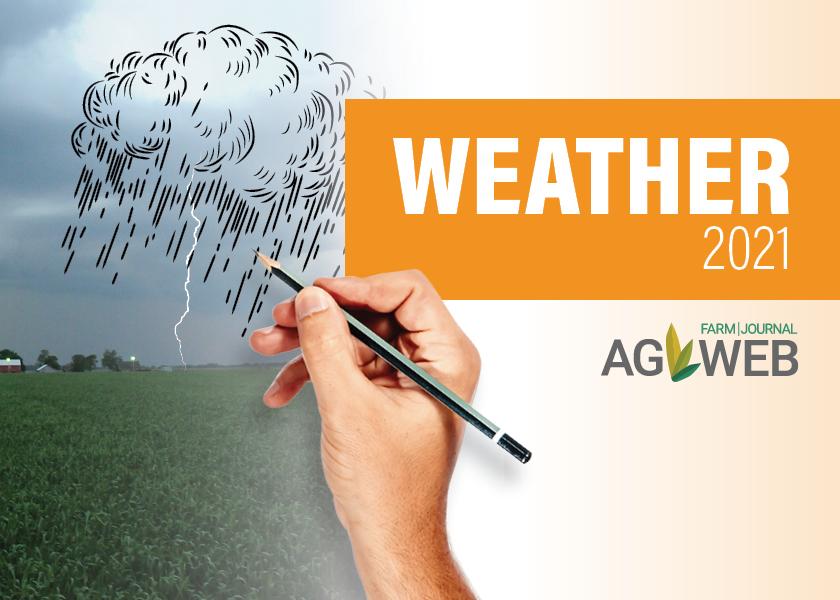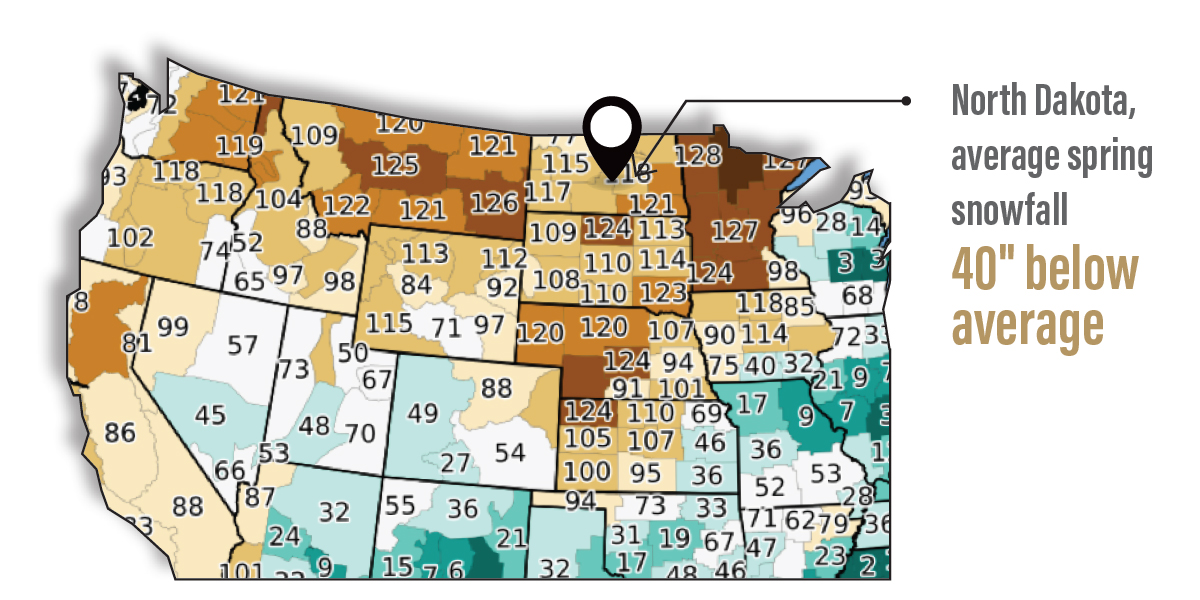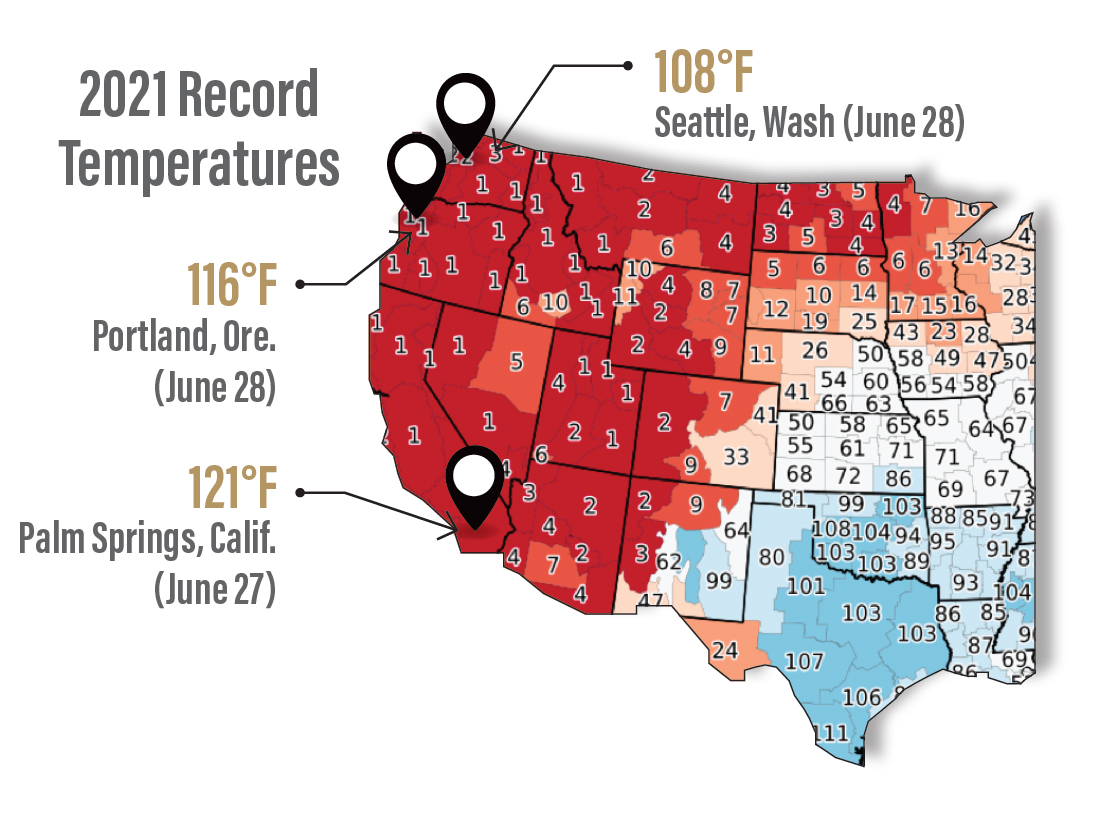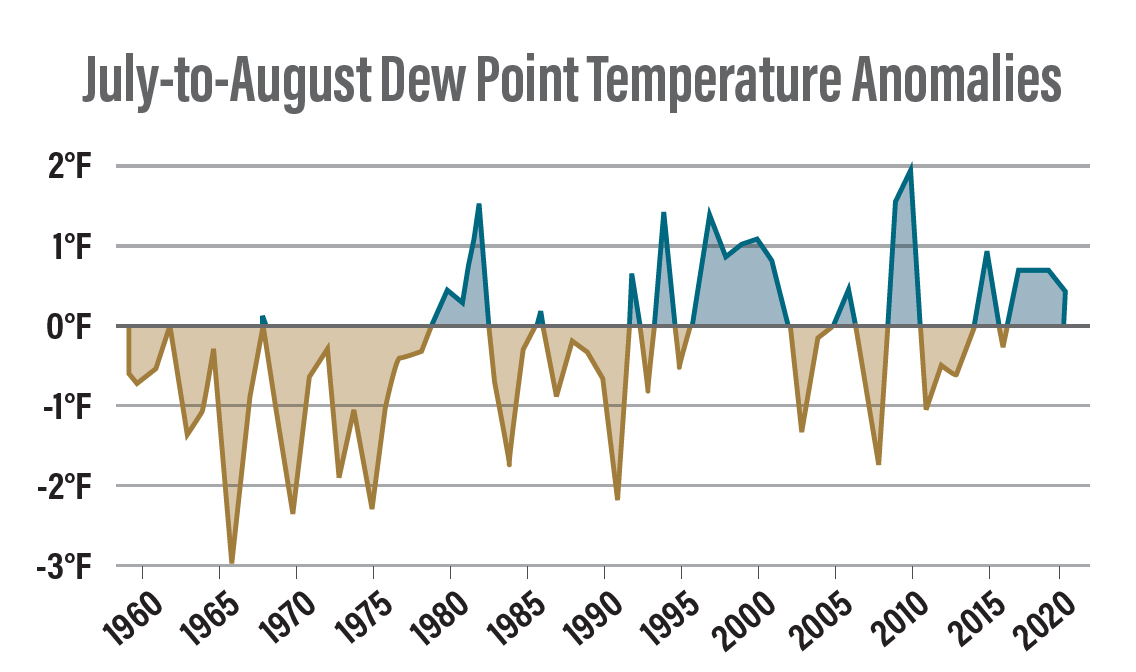A Look Back: 4 Takes on 2021 Weather

From droughts to hurricanes to wildfires, this year has offered a little of everything when it comes to weather.
As of early October, the National Oceanic Atmospheric Administration reports 18 different weather and climate disaster events posted losses exceeding $1 billion. The 1980–2020 annual average is 7.1 events.
Below Eric Snodgrass, principal atmospheric scientist with Nutrien Ag Solutions, shares his top 2021 weather takeaways in regard to agriculture.
Drought in the Northern Plains

This map shows the precipitation rank by climate district for June 1 to Aug 15, 2021. The closer the number is to 129, the drier it was (there are 129 years in the dataset). Snodgrass says the Northern Plains was set up for a drought due to lack of snowfall. In North Dakota, for instance, average snowfall was 40” below average earlier this spring.
Heat in the West

This map shows the temperature ranks by climate district for June 1 to Aug. 15, 2021. A rank of one means it was the warmest time period (June 1 – Aug. 15) in the last 129 years.
Wildfires and Smokey Skies

Around 54,350 wildfires have burned 6.8 million acres in the U.S., as of early December. That is slightly below the 10-year average. The map below shows the vertically integrated smoke on July 23, 2021; the brighter colors indicate a higher level of smoke from the ground through the atmosphere. The smoke transformed yellow suns to red, orange and even pink orbs, surrounded by hazy horizons.
Crop-Saving Moisture

Despite very dry conditions in July and most of August in Iowa, dewpoint temperatures were higher than the climatological average by approximately 1°F, Snodgrass says. This graph shows July-to-August dewpoint temperature anomalies from 1950-2021. “Most of the years with higher-than-average dewpoint temperatures in summer were wetter than average summers, but this year was dry but had high dewpoints,” he says. “That high dewpoint air could be condensed out onto the crop each morning as the temperatures reached their morning low. This provided a small amount of water to the crop each morning.”







